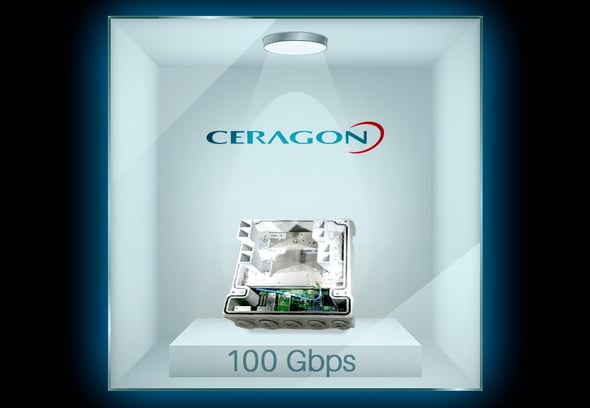Ceragon showcased in MWC – it can be done!
Wireless point-to-point backhaul capacity is an ever-growing challenge. Since mobile operators and wireless ISPs see wireless transport and wireless backhaul as key their access, aggregation and backbone infrastructure, the capacity demand from this domain grows as new applications and business models drive the capacity boom.
For the last few decades, microwave communications provided 100s of Mpbs for such networks and even used modern capacity-boosting and spectral efficiency-enhancing technology to drive multi-Gbps capacity as network demands grew. However, the evolution of mobile networks towards Gigabit LTE and 5G, and the growing popularity of cloud and XaaS services in the ISP domain, has led to an even higher demand for capacity.
This demand also led to the use of wider microwave channels (112MHz and 224MHz in the future) and millimeter wave spectrums such as V-Band and E-Band.
The use of a higher spectrum together with the availability of wider channels enabled wireless backhaul solutions to deliver multi-Gbps capacity, starting from a few Gbps and reaching 20Gbps solutions that utilize wide channels (2GHz) combined with basic spectral efficiency-enhancing technologies such as Cross-Polarization Interference-Cancelation (XPIC).
Looking forward, additional capacity can be driven from the E-Band spectrum by extending advanced spectral-efficiency enhancing technologies such as 4x4 line-of-sight MIMO to the millimeterwave realm, which will result in a 40Gbps capacity link. However this link requires 2 radios or antennas at each end and also exhausts the capabilities of the E-Band spectrum as the widest channel spacing available in this spectrum is 2GHz.
How will Ceragon achieve a 100Gbps, single-box radio?
In Barcelona last week, at the MWC, Ceragon presented a prototype of a 100GBps, single-box radio. This prototype utilizes several parameters, technologies and conditions to achieve what was once conceived as impossible:
- Use of ultra-high frequency or D-band (130-174GHz)—This high frequency allows for wider channels and also reduces the antenna separation required for LoS MIMO operation. Work in close-to-optimal D-band antenna separation facilitates on-board MIMO or single-box MIMO architecture.
- Use of ultra-wide channels – to achieve 25Gbps capacity over a 5GHz channel utilizing 64QAM or 128QAM modulation.
- Use of Multicore technology – the next generation of Ceragon Multicore technology makes implementing on-board-MIMO feasible.
To conclude, 100GBps radio is feasible and is expected to be a crucial part of the 5G-NR SA backbone architecture as it matures over the next 5 years.
For more details about the mobile and wireless backhaul network evolution, download the INFOGRAPHICS:

